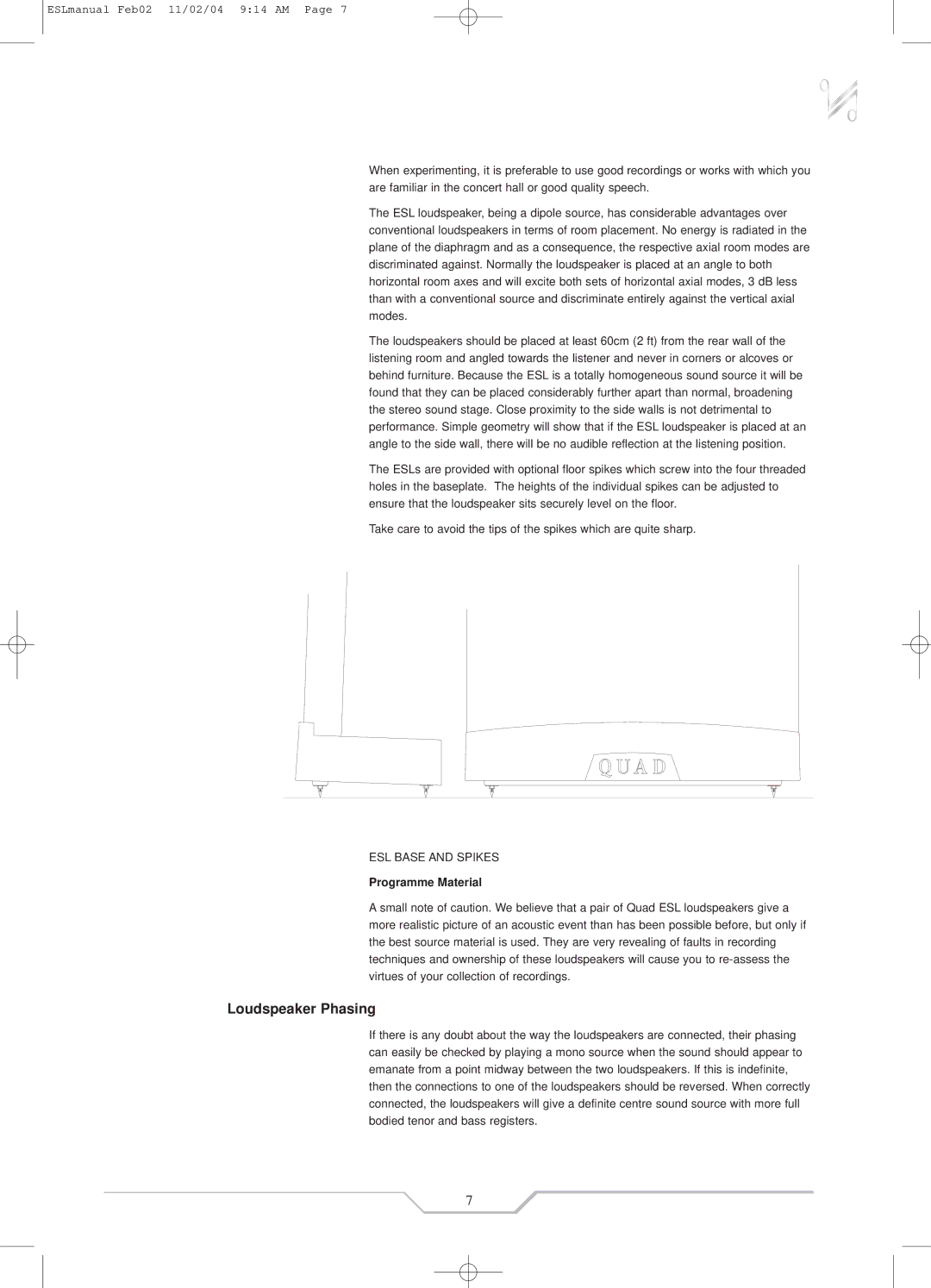
ESLmanual Feb02 11/02/04 9:14 AM Page 7
When experimenting, it is preferable to use good recordings or works with which you are familiar in the concert hall or good quality speech.
The ESL loudspeaker, being a dipole source, has considerable advantages over conventional loudspeakers in terms of room placement. No energy is radiated in the plane of the diaphragm and as a consequence, the respective axial room modes are discriminated against. Normally the loudspeaker is placed at an angle to both horizontal room axes and will excite both sets of horizontal axial modes, 3 dB less than with a conventional source and discriminate entirely against the vertical axial modes.
The loudspeakers should be placed at least 60cm (2 ft) from the rear wall of the listening room and angled towards the listener and never in corners or alcoves or behind furniture. Because the ESL is a totally homogeneous sound source it will be found that they can be placed considerably further apart than normal, broadening the stereo sound stage. Close proximity to the side walls is not detrimental to performance. Simple geometry will show that if the ESL loudspeaker is placed at an angle to the side wall, there will be no audible reflection at the listening position.
The ESLs are provided with optional floor spikes which screw into the four threaded holes in the baseplate. The heights of the individual spikes can be adjusted to ensure that the loudspeaker sits securely level on the floor.
Take care to avoid the tips of the spikes which are quite sharp.
ESL BASE AND SPIKES
Programme Material
A small note of caution. We believe that a pair of Quad ESL loudspeakers give a more realistic picture of an acoustic event than has been possible before, but only if the best source material is used. They are very revealing of faults in recording techniques and ownership of these loudspeakers will cause you to
Loudspeaker Phasing
If there is any doubt about the way the loudspeakers are connected, their phasing can easily be checked by playing a mono source when the sound should appear to emanate from a point midway between the two loudspeakers. If this is indefinite, then the connections to one of the loudspeakers should be reversed. When correctly connected, the loudspeakers will give a definite centre sound source with more full bodied tenor and bass registers.
7
